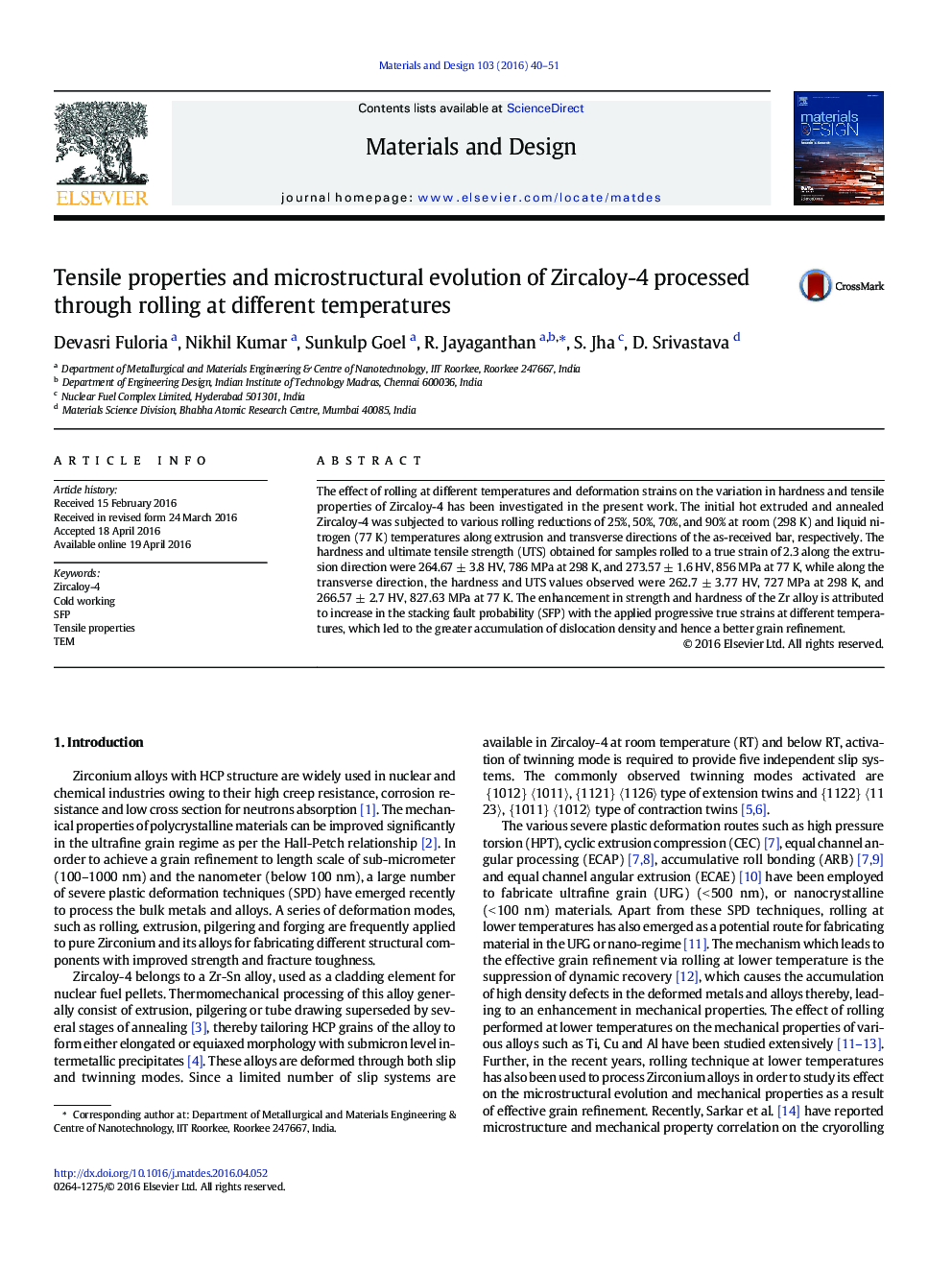| Article ID | Journal | Published Year | Pages | File Type |
|---|---|---|---|---|
| 828004 | Materials & Design | 2016 | 12 Pages |
•Zircaloy-4 sheets with different textures of the as-received bar were rolled at room and liquid nitrogen temperatures.•Microstructural evolutions and mechanical properties of deformed alloy were influenced by anisotropy of its hcp structure.•Higher stacking fault along the extrusion direction led to greater accumulation of dislocations and a better grain refinement.•The improvement in mechanical properties were observed along the extrusion direction.
The effect of rolling at different temperatures and deformation strains on the variation in hardness and tensile properties of Zircaloy-4 has been investigated in the present work. The initial hot extruded and annealed Zircaloy-4 was subjected to various rolling reductions of 25%, 50%, 70%, and 90% at room (298 K) and liquid nitrogen (77 K) temperatures along extrusion and transverse directions of the as-received bar, respectively. The hardness and ultimate tensile strength (UTS) obtained for samples rolled to a true strain of 2.3 along the extrusion direction were 264.67 ± 3.8 HV, 786 MPa at 298 K, and 273.57 ± 1.6 HV, 856 MPa at 77 K, while along the transverse direction, the hardness and UTS values observed were 262.7 ± 3.77 HV, 727 MPa at 298 K, and 266.57 ± 2.7 HV, 827.63 MPa at 77 K. The enhancement in strength and hardness of the Zr alloy is attributed to increase in the stacking fault probability (SFP) with the applied progressive true strains at different temperatures, which led to the greater accumulation of dislocation density and hence a better grain refinement.
Graphical abstractFigure optionsDownload full-size imageDownload as PowerPoint slide
